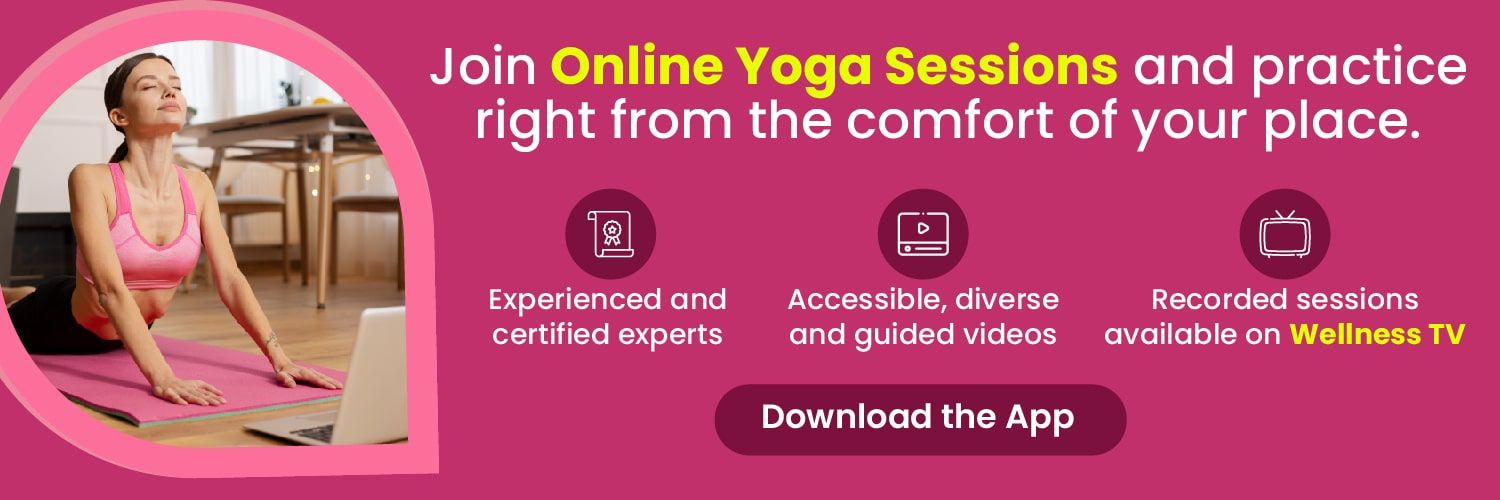The Best Yoga Mat Alternative: What To Use Instead Of A Yoga Mat?
- 6 months ago
Yoga is one of the most rewarding practices for the mind, body, and soul. It can be done just about anywhere — at home, in the park, or even in your office. While having a yoga mat is often recommended for comfort and stability, it’s not a must-have. If you’re new to yoga or forgot your mat at home, don’t worry. There are plenty of yoga mat alternatives that are just as effective, safe, and even more convenient depending on your environment.
In this blog, we’ll explore various alternatives you can use instead of a yoga mat, along with tips to make your practice comfortable, safe, and beginner-friendly.
Also Read: 10 Yoga Asanas You Can Easily Practice Everyday
Why Do People Use Yoga Mats?
Before jumping into the alternatives, let’s understand why yoga mats are popular in the first place:
- Comfort: Mats offer cushioning for your joints, especially during floor-based poses.
- Grip: They provide traction to prevent slipping during poses like Downward Dog or Warrior.
- Hygiene: Mats create a barrier between you and the floor, especially in public or outdoor settings.
- Defined Space: A mat gives you a personal space, helping you stay centered and focused.
But while helpful, a mat is not essential. Many yogis around the world — especially in the early days of yoga — practiced without mats and used natural surfaces or simple cloths.
1. Thick Towel – A Soft and Simple Alternative

One of the simplest alternatives to a yoga mat is using a large bath towel or beach towel. It’s readily available in most households and provides a soft surface to practice on.
Benefits:
- Offers cushioning for your spine, knees, and elbows.
- Absorbs sweat, keeping you dry.
- Lightweight and easy to carry.
Best For:
- Gentle yoga styles like Yin, Hatha, or Restorative Yoga.
- Indoor practice on carpet or soft flooring.
Tips:
- Fold it in half for extra padding under your knees or hips.
- If it slips, place it over a carpet or lightly dampen it to improve grip on hard floors.
2. Carpet or Rug – Comfort Right Under Your Feet

Your home carpet or rug can work just fine as a yoga surface, especially for slow-paced and beginner-friendly yoga sessions.
Benefits:
- Already part of your home setup — no extra gear needed.
- Offers good cushioning.
Best For:
- Stretching, meditative poses, or seated asanas.
- Floor-based practices.
Tips:
- Make sure the carpet isn't too fluffy, or it could throw off your balance.
- Clean the space before practicing to maintain hygiene.
3. Folded Blanket – For Support and Flexibility

A thick, tightly woven blanket can act as a comfortable surface for yoga. You can fold or unfold it as per your needs.
Benefits:
- Provides excellent cushioning.
- Can be adjusted for height or thickness.
- Portable and compact.
Best For:
- Restorative yoga, seated meditation, or poses like Child’s Pose and Savasana.
Tips:
- Avoid slippery or silk-textured blankets.
- Great for supporting knees, ankles, or lower back during practice.
Also Read: Yoga Is Not As Beneficial For Men As It Is For Women
4. Grass or Sand – Practicing with Nature

If you love being outdoors, why not let the earth itself be your mat? Practicing yoga on grass or sand can be deeply grounding and refreshing.
Benefits:
- Direct connection with nature, which is calming for the mind.
- Uneven surfaces like sand can build balance and strength.
Best For:
- Morning yoga in the garden or beach sessions.
- Breathwork, grounding postures, or standing flows.
Tips:
- Choose a clean, flat spot free from stones or debris.
- Wear yoga socks or bring a towel to sit on for seated poses.
5. Yoga Socks and Gloves – Grip on the Go

Grip-enhancing yoga socks and gloves are a great option when you're practicing without a mat, especially on smooth or slippery floors.
Benefits:
- Prevent slipping during standing or balancing poses.
- Lightweight and travel-friendly.
- Can be worn on any surface — tile, hardwood, or carpet.
Best For:
- Fast-paced or Vinyasa-style yoga.
- Traveling or hotel room workouts.
Tips:
- Pair with a towel or blanket for seated postures.
- Wash after use to maintain hygiene and grip.
6. Exercise or Pilates Mat – Multi-Purpose Comfort

Already own a workout or Pilates mat? You’re in luck! These mats are similar to yoga mats in size and function.
Benefits:
- Designed for floor exercises, offering good cushioning.
- Usually non-slip and easy to clean.
Best For:
- All types of yoga practices, from beginner to advanced.
- Core workouts and stretching routines.
Tips:
- If it’s too thick or squishy, balance poses might be harder.
- Use a towel on top if it gets too sweaty or slippery.
7. Old Bedsheet or Curtain – A Quick Fix

In emergencies, even an old bedsheet or curtain can serve as a makeshift yoga mat. It's not ideal for heavy practice, but it works for light stretches or meditative poses.
Benefits:
- Easy to find at home.
- Lightweight and portable.
Best For:
- Light stretching or mindfulness sessions.
- Temporary use when traveling or practicing in a clean carpeted room.
Tips:
- Avoid using it on hard floors, as it offers little to no grip.
- Wash regularly to avoid dust buildup.
Also Read: 8 Yoga Poses That Burn More Calories Than Walking
8. Practicing on Bare Floor – Back to Basics

Practicing yoga directly on the floor might sound intimidating, but for some poses, it’s doable — and even beneficial.
Benefits:
- Improves body awareness and muscle strength.
- No equipment needed at all.
Best For:
- Standing poses like Mountain Pose or Tree Pose.
- Breathwork and mindful movement.
Tips:
- Avoid if you have knee or joint issues.
- Make sure the floor isn’t cold or slippery.

How to Choose the Best Alternative for You?
When selecting a yoga mat alternative, consider the following:
- Surface Grip: Choose an option that prevents slipping, especially if you’re doing faster flows or balance poses.
- Cushioning: Protect your joints, especially knees, wrists, and hips.
- Type of Yoga: Restorative yoga may be more forgiving than Power Yoga when it comes to alternative surfaces.
- Location: Practicing outdoors? Choose something washable. Practicing indoors? Your carpet or towel might be enough.
Final Thoughts: You Don’t Need Fancy Gear to Practice Yoga
Yoga is not about perfection, equipment, or how flexible you are. It’s about showing up for yourself, connecting to your breath, and moving your body with awareness.
If you don’t have a yoga mat, don’t let that stop you. Use what’s available to you — a towel, blanket, rug, or just your bare feet on the earth. The most important part is your intention and presence during your practice.
So roll out that towel or find a cozy spot on your carpet — your yoga journey can start anywhere!








